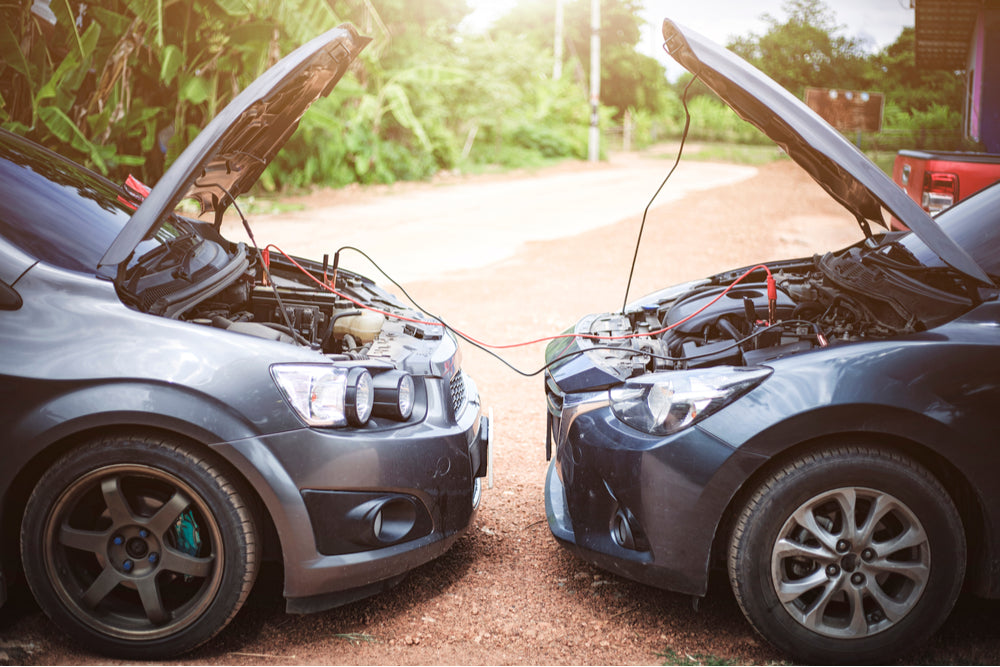How to Jump-Start a Car Battery – The Steps Needed
A dead battery is often a huge inconvenience because you don’t notice it until you need to go somewhere. However, if you have jumper cables in the car and can use them correctly, the process is quite simple.
When the car engine is running well, the alternator recharges it as long as the battery is still good. If not, you can at least get yourself to an auto parts store to get a replacement. Most of these locations install them for you for free.
Learning How to Jump Start a Car Battery
Jumping a car battery is easy, but it can be dangerous, so use caution. The battery is inside the engine compartment, and flammable gases may be there. A spark can easily start a fire.
When you hook up the battery to another live battery (from another car), you want to make sure you’re not creating sparks. It’s best to connect the cables the right way to reduce this issue.
You should also make sure that the jumper cable ends don’t touch metal surfaces or each other until they’re connected to the right battery terminals. This is one of the most difficult things to do because most of the areas under the hood are metal.
If you have another person with you when jumping a car battery, they can hold the ends and keep them separated while you move around the cars to connect them.
Please check your car manual if possible to see how to connect the jumper cables. There can be minor variations between different makes. If you want to learn how to jump-start a car battery with a universal method, here it is:
Steps for Jumping a Car Battery
- Keep a decent pair of jumper cables in the car with you. They should be thicker and have proper insulation with clean metal clamps. Sometimes, the cables come with a chart to tell you how to connect them. Keep that with the cables.
- Open the hood of both cars to locate the car battery and the terminals. Sometimes, the battery is hidden, so you only see the positive and negative posts.
- With the locations of the batteries in mind, park the car with the good battery as close as you can to the dead battery, leaving yourself some room to move between them. As you hook up the jumper cables, don’t let the ends dangle into your engine compartment because they could get caught on moving parts or scratch the paint on the outside. Turn off the ignition in both vehicles, set your parking brakes, and ensure that the cars are in neutral or park, depending on the transmission style. Turn off the accessories (radio and lights). If the cars aren’t in a safe area (such as on the side of the road), turn on the hazard flashers.
- Clamp the positive cable end (red) to the dead battery and make sure the clamp stays on to offer a stronger electrical connection. If the terminal shows corrosion, twist the clamp jaws to get through it. Before you go to the other vehicle to make a connection, ensure that the matching negative clamp (black) isn’t touching metal.
- Now, clamp the other positive cable end to the booster car’s positive battery terminal by looking for the plus sign. Attach the negative cable to the negative terminal of your booster car. Go back to the dead vehicle and attach the end to any unpainted metal surface around the engine. There might be a labeled remote negative terminal. If not, use an unpainted bracket or bolt that’s several inches away from your dead battery. That gives you a solid ground.
- Perform a final check to ensure that the jumper cables aren’t near moving engine parts and start your booster car. Allow it to idle for a few minutes to build a charge for the dead battery. If it’s a new battery that was drained by the car lights, it should start quickly. Otherwise, it could take a bit longer. You may want to rev up the engine in the booster car to quicken the process.
- Start the vehicle that has the dead battery so that they can both idle for a bit. If the car doesn’t start but cranks quickly, there could be other issues.
- Once the car is running, disconnect the jumper cables carefully, reversing the initial order. The first cable is the negative one on the formerly dead battery, and this is the most critical.
- Drive your newly jump-started car for about 20 minutes to let the alternator recharge the battery. Make sure you’re somewhere safe before you turn it off in case you have to jump-start it again.
Conclusion
You now know how to jump-start a car battery. These tips can be extremely helpful if you find yourself on the road (or at home) with a battery that just can’t crank.
After jumping a car battery, it’s a good idea to have it tested at an auto parts store. Many of them do this for free. That way, you can ensure that it’s still a decent battery or replace it.


